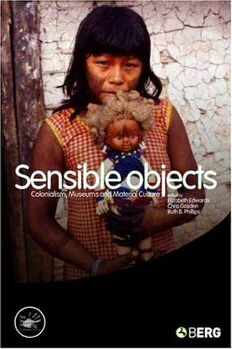
Sensible Objects: Colonialism, Museums and Material Culture PDF
321 Pages·2006·2.104 MB·English
Most books are stored in the elastic cloud where traffic is expensive. For this reason, we have a limit on daily download.
Preview Sensible Objects: Colonialism, Museums and Material Culture
Description:
Anthropologists of the senses have long argued that cultures differ in their sensory registers. This groundbreaking volume applies this idea to material culture and the social practices that endow objects with meanings in both colonial and postcolonial relationships. It challenges the privileged position of the sense of vision in the analysis of material culture. Contributors argue that vision can only be understood in relation to the other senses. In this they present another challenge to the assumed western five-sense model, and show how our understanding of material culture in both historical and contemporary contexts might be reconfigured if we consider the role of smell, taste, feel and sound, as well as sight, in making meanings about objects.
See more
The list of books you might like
Most books are stored in the elastic cloud where traffic is expensive. For this reason, we have a limit on daily download.
